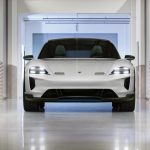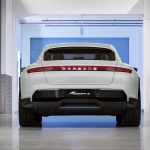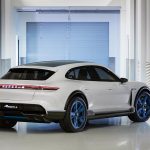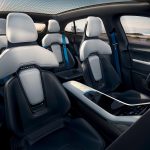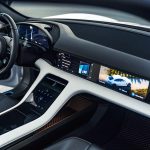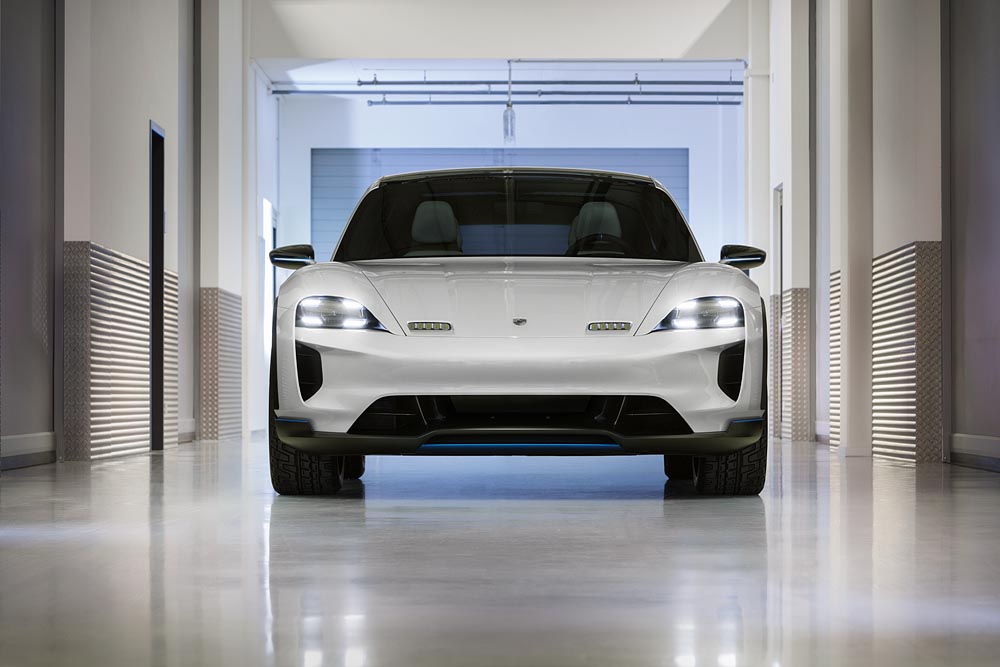
Porsche stunned the world with the Mission E concept at the Geneva show three long years ago. Today, also in Geneva, the company has shown a second Mission E concept, this time a Panamera-based electrified wagon with SUV pretenses called the Mission E Cross Turismo. The Cross Turismo uses the Panamera Sport Turismo’s body with a bit of extra suspension travel and a 600 horsepower system of electric motors with output to all four wheels. This is much more than a concept design study, this is a near-production ready electric Crossover that could be in Porsche showrooms within twelve months. Porsche’s press release coyly says “The Mission E Cross Turismo… is already fit for the road, [and] builds on the concept of the Mission E study.”
Porsche says the Cross Turismo is fitted with a pair of permanent magnet synchronous motors (which they’re abbreviating as PSM in typical Porsche fashion). Those motors provide the Cross Turismo with more than 600 horsepower and allow the car to sprint from stop to sixty in under 3.5 seconds, and reach 120 in under 12 seconds. In the time it takes my 1976 Porsche 912E to get to 60, this SUV is going twice as fast. Porsche also touts the ability of this Mission E (and presumably all Mission E variants) to accelerate with continuous power: multiple acceleration phases are possible in direct succession without a degradation of performance. Every 0-60 run will be as sharp and crisp as the last until the battery is out of juice.
Oliver Blume, CEO of Porsche AG: ‘The Mission E Cross Turismo is an expression of how we envision the all-electric future. It combines sportiness and everyday practicality in unique style. Our vehicle will be fast to drive, but also quick to recharge and able to replicate its performance time after time.’
Mission E Cross Turismo Display and Operating Concept

The innovative display and operating concept is a design highlight of the Mission E Cross Turismo. As part of a new display package, Porsche is introducing a heads-up display with the purpose of passing along information without distracting the driver.
Using a camera located in the rear-view mirrors, Porsche’s driver display utilizes “eye-tracking” control to display which of the three virtual round gauges in the instrument panel the driver is looking at. The displays he or she can see are then brought to the foreground, while others are made smaller when the driver looks away. Operations are carried out using smart touch controls on the steering wheel. In addition:
- Passenger display: This screen extends across the full width of the passenger side. Using eye-tracking and touch screen technology, the passenger can operate various apps to control features such as media, navigation and air conditioning as well as contact lists.
- Center console touch panel with detailed information menus.
- Small touch screens: These are placed both in the multifunctional window lift modules (for seat adjustment and comfort functions) as well as in the slatted air vents on the right and left of the dashboard. For example, swiping from left to right can increase the fan speed.
